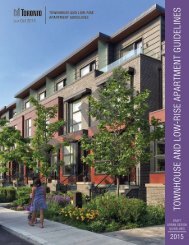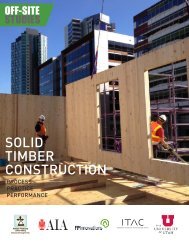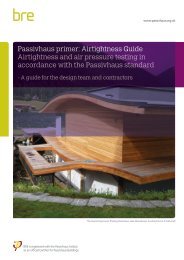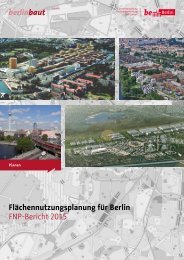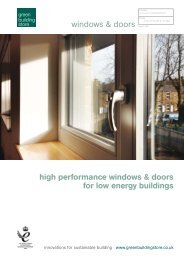TRUE URBAN SPIRIT
b008379b
b008379b
You also want an ePaper? Increase the reach of your titles
YUMPU automatically turns print PDFs into web optimized ePapers that Google loves.
OPEN SPACES: GREEN & <strong>URBAN</strong><br />
4.2<br />
QUALITY<br />
QUANTITY<br />
FOCUS<br />
Planning and managing open spaces is a<br />
complex task. Green and leisure spaces<br />
are to a large degree defined by their<br />
quality, which is determined by large,<br />
contiguous surfaces, the identity of<br />
land scape elements and their suitability<br />
for different forms of use. The sensitive<br />
treatment of natural resources is es sential<br />
not only regarding aspects where<br />
nature conservation is paramount. Both<br />
ecological functioning and practical<br />
usability require high-quality networking.<br />
Urban public spaces should be<br />
qualitatively excellent, barrier-free,<br />
robust and suitable for everyday and<br />
flexible use; they should offer options<br />
for different user groups without excluding<br />
others. They should take account<br />
of gender-specific needs and the different<br />
play and role behaviours of girls and<br />
boys. Where appropriate, they should<br />
offer space for sidewalk café gardens,<br />
kiosks and food stalls as well as for<br />
zones without commercial activities,<br />
plus facilities for sports and leisure in<br />
public space. Participation is becoming<br />
increasingly important to meet the great<br />
variety of demands.<br />
Vienna is growing and needs new open<br />
spaces to be able to offer all citizens<br />
excellent options even with a total<br />
population of 2 million. For this reason,<br />
what is needed is a clear idea of how<br />
to preserve and evolve the green grid of<br />
the city as well as adequate instruments<br />
of land mobilisation and provision and<br />
more public spaces that are suitable<br />
for a great variety of uses. These joint<br />
challenges for the city as a whole must<br />
be addressed by the growing city to<br />
safeguard and further develop its protection<br />
zones and green spaces on the<br />
basis of efficient management.<br />
ADAPTATION TO CLIMATE CHANGE<br />
In the future, the function of open<br />
spaces for the urban climate will become<br />
more and more important alongside<br />
their recreational value. They must<br />
be designed in a manner that allows<br />
them to withstand the effects of climate<br />
change and to support the city in adapting<br />
to climate change as well. For the<br />
latter, the conservation of fresh air<br />
corridors and cold air source areas<br />
plays a central role. Small-scale measures,<br />
e. g. minimal soil sealing, planting<br />
of trees, shading, rainwater management,<br />
a high degree of urban greening,<br />
greened roofscapes and façades, are<br />
equally significant.<br />
115



